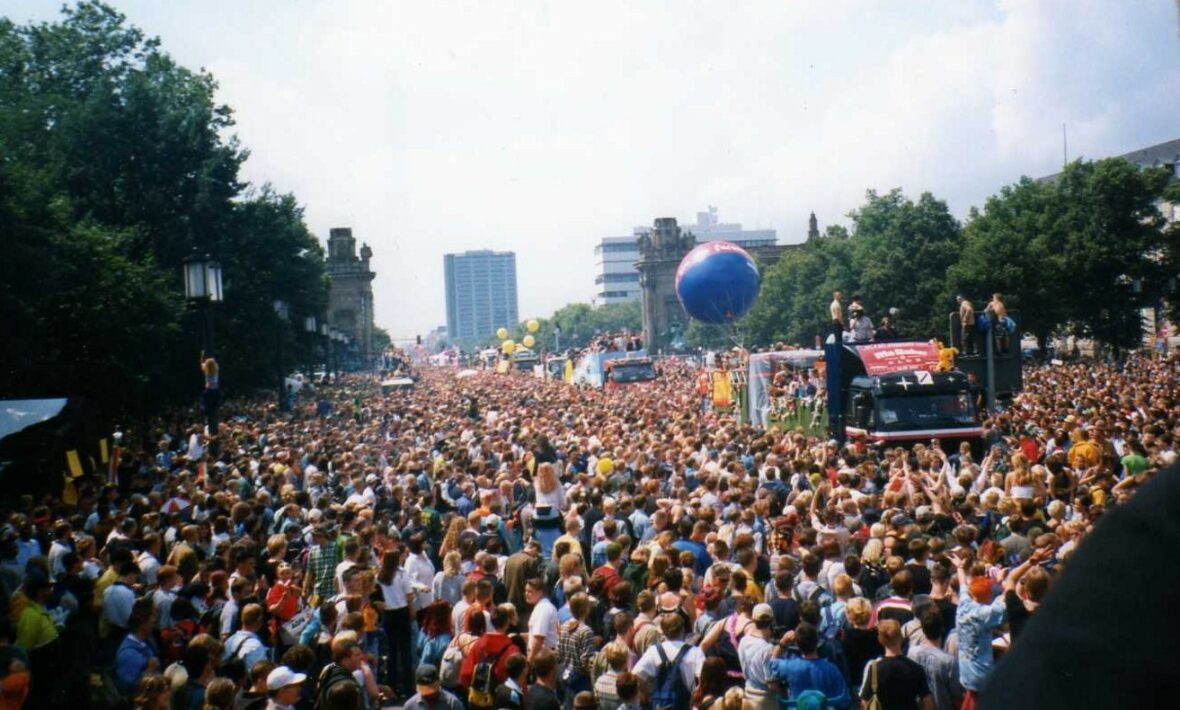
What in God’s name is German music and what the hell does it play? Lucky we’re here to help. Did you know that Germany is the world’s third biggest music market following the USA and Japan? From classical Beethoven, to hardcore techno, raging gothic festivals and the most infamous club in the world (Berghain) – it seems Germany music is the master of reinvention. Here’s our two cents.
HOW IT ALL BEGAN: CLASSICAL MUSIC
Artists who revolutionized Germany: Beethoven, Bach, Strauss.
The Three B’s: Beethoven, Bach and Brahm need little introduction. The grand daddies of classical composers, these music maestros changed the face of classical music, and even to this day continue to shape and influence classical compositions.
Classical music lovers take note. Johann Bach is considered to be one of the most important composers of all time, contributing to Baroque, which is a style of music that was composed from 1600 to 1750 following the Renaissance. This type of music focuses on ornate compositions and chord progressions a.k.a the organ.
From then on, the Romantic era of Classical music followed suite and most notably Ludwig Van Beethoven became Germany’s most famous composer in classical music, followed closely by Johannes Brahm. Beethoven’s nine symphonies is considered to have great influence in the orchestration period, producing a handful of piano pieces and string quartets
As for their modern day equivalent? The Berlin Philharmonic is one of the best symphony orchestras in Germany. If you’re a huge classical music buff, the Wagner festival in Bayreuth or the Donaueschingen Festival of Contemporary Music have your name all over them.

THE GOTH SCENE
Artists who revolutionized Germany: Die Toten Hosen.
The gothic sub-culture in Germany is a weird one. Since 1987, the town of Leipzig has hosted the annual Wave Gothic festival celebrating all things dark and mysterious. To people passing by, it’s pretty much the weirdest get together in the world, with approximately 20,000 people dressed as goths, cybergoths, neo-Victorians, and medieval fans in anything from PVC costumes to vampire attire. Weirdly wonderful, sinfully strange and often some x rated naughtiness.

THE HARDCORE ROCK AND METAL DAYZ-EE
Artists who revolutionized Germany: Rammstein, Scorpions, Sodom.
If there was one country who knows how to rock out to heavy metal better than anyone else, it would be Germany. They’re serious contenders when it comes to the heavy metal scene with the breakthrough of Rammstein and The Puhdy’s in 1965.
This genre continues to prove popular in Germany, with many well known rock music festivals such as Wacken Open Air taking place annually. It’s the largest heavy metal open air festival in the world attracting up to 80,000 people!
THE INTRODUCTION OF TECHNO
Artists who revolutionized Germany: Sven Vath, the “Godfather of Techno” and Paul Van Dyk.
Did you know that the fall of the Berlin wall in 1989 marked the beginning of techno and underground parties? Berlin suddenly became an oasis for house parties in abandoned buildings, factories and voila – German techno was born.
Not too long after the wall came down a festival known as The Love Parade took place. Over 150 people took to the streets of Berlin to protest the power of love and music organised by Matthias Roeingh, aka “Dr Motte”, a DJ of the Berlin underground scene who believed that “Music knows no boundaries or nationalities.” It usually started about 2pm, extending through to the evening as the whole city turned into a huge club. The parade would have huge trucks blasting out house and techno beats all day to patrons dressed in ‘traditional’ rave costumes, which included furry leg warmers, glow sticks and whistles.
This parade played a significant role in the years to come, extending to other cities around the globe from Santiago, San Francisco and Tel-Aviv with close to a million attendees in the years between 1997 – 2000. However, it was suspended in 2011 after the death of 21 people following the Love Parade in Duisburg in 2010.
Where one goes, others follow, and soon after the birth of techno, electro and dance music broke through and took off. You may be familiar with the worlds leading dance event known as the ‘Sensation White‘, where roughly 30,000 people gather from all over the world dressed in, you guessed it, white.


THE CLUBBING SCENE NOW
Clubs that revolutionized Germany: The most exclusive club known as the Berghain and Tresor in Berlin.
Anyone that has ever been to Berlin will probably have been asked, “Have you been to Berghain?” reminding us that the Berlin party scene will never die (and nor would we want it too). From 1989 through to present day, Germany still continues to be the master of reinventing house, techno and electro, even developing trance music known as “Anthem trance” or “progressive and ambient trance”. This genre of music is particularly evident in Germany’s nightlife scene, so much so that the country is often cited as having one of the largest electronic music scenes in the world.
Which brings us to the next point. CLUBBING IN GERMANY. It’s simply a rite of passage but specifically in Berlin, Cologne, Frankfurt, Stuggard and Mannheim, clubbing is just a way of life. Berlin consistently tops the list as one of Europe’s most infamous nightlife cities, with an extraordinary amount of clubs, bars and parties to attend. The nightlife is intense so whether you’re a music lover, a die-hard party animal or you just bloody love Berlin – you won’t miss a beat in Germany.



